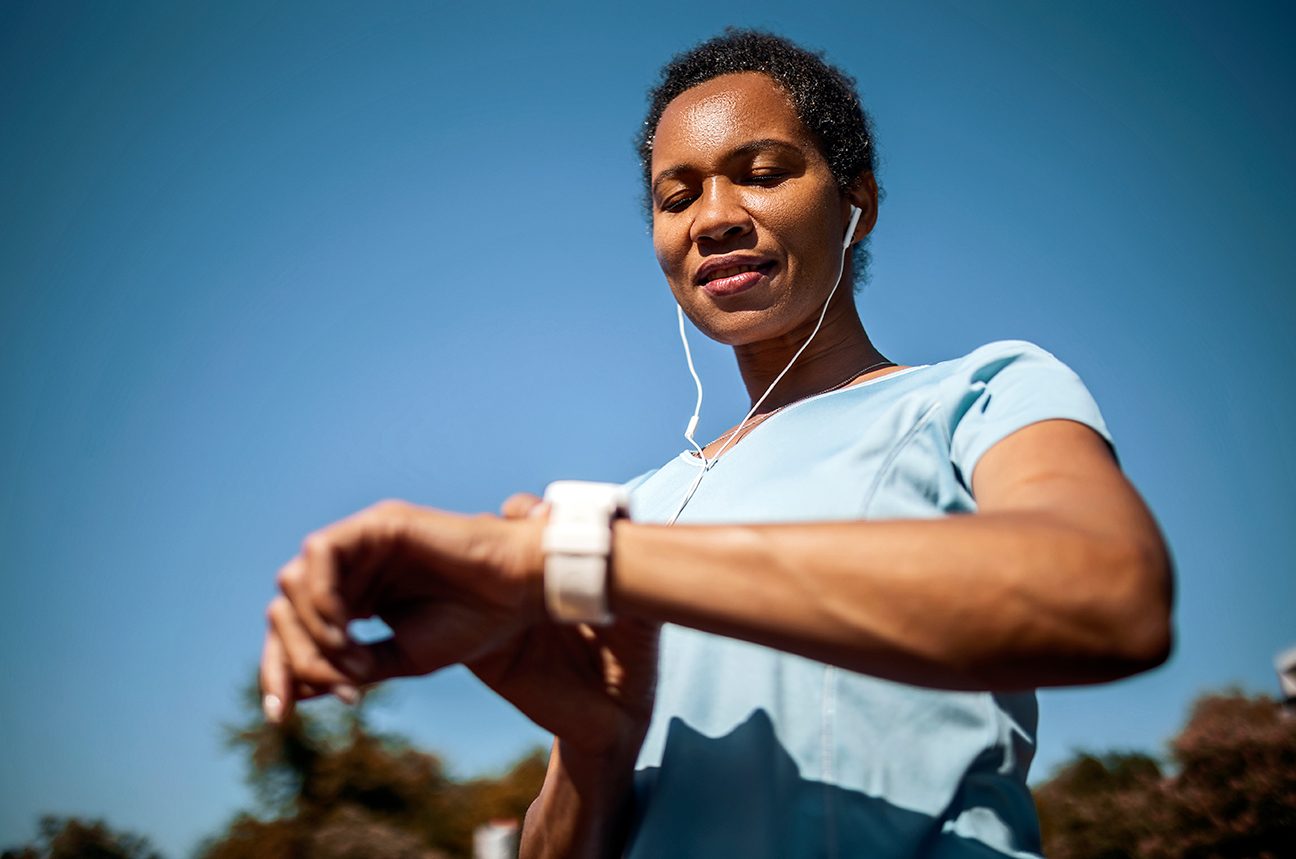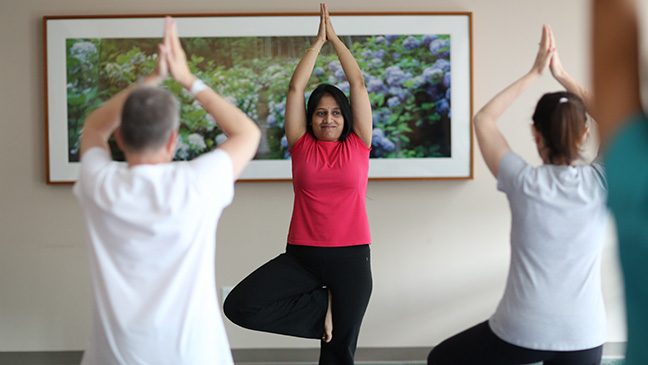- Manage Your Risk
- Physical Activity
Every system in your body relies on physical activity.
Every system in your body relies on physical activity.
Staying active throughout the day can help you feel better and reduce your risk for diseases like cancer. Exercise reduces your risk for cancer because:
- It helps you maintain a healthy weight. Being overweight or obese is linked to 13 different types of cancer.
- It helps regulate your hormones. Increased levels of some hormones can increase your cancer risk.
- It supports healthy digestion and may reduce the number of toxins in your body.
How to add physical activity to your day
Sit less. Get up and move for at least one to two minutes every hour that you are awake. Extended periods of sitting increase your cancer risk, even if you exercise regularly. Sitting too much also increases your risk for obesity, which leads to cancer and other chronic diseases.
Schedule exercise. Plan where, when and how you will exercise. And build up gradually.
The American Institute for Cancer Research recommends at least 150 minutes of moderate exercise or 75 minutes of vigorous exercise each week. Moderate exercise is activities like brisk walking where you should still be able to hold a conversation, but you won't be able to sing. Vigorous exercise means activities like running, where you'd only be able to say a few words without feeling out of breath.
It’s best to do a combination of both, and you don’t have to do it all at one time. You can split up your activity into short intervals of as little as 10 minutes.
Make sure you include strength training
Build Strength. If your body is strong, everyday tasks are easier. And you are less likely to get injured. Strength training, also called resistance training, should be done twice a week.
Strength training also helps you maintain a healthy weight by building muscle, which boosts your metabolism.
Reward yourself. Keep yourself motivated by celebrating success. Small weekly rewards could include a new song download for workouts, a manicure or a trip to see a movie. You can also make exercise something to look forward to by adding in guilty pleasures like while you work out. Rewards will help you keep to your goals over time.
Featured Articles

Hyperlipidemia: 8 things to know about high cholesterol and cancer

How to determine calorie burn

Cancer treatment side effect: Joint pain

Do weighted vests benefit your fitness routine?

Can sitting for too long really increase your cancer risk?

How to get your heart rate up

How to avoid injury when starting a new exercise routine

What is yoga therapy?
How exercise can reduce your cancer risk
Cancer Prevention Center
The benefits of foam rolling
Stress, fatigue, too much physical activity or even too little physical activity can all contribute to inflammation and the buildup of tension in your muscles. This can cause painful knots and limit your range of motion.
But what if you could just roll it all away?
You can. With a foam roller.
What is a foam roller?
“A foam roller is an instrument you can use to relieve muscle tightness, soreness and inflammation in the body, with the goal of increasing the joints’ range of motion,” says Adam Siegman, Program Manager for the Chief Wellness Office at MD Anderson.
In its simplest form, a foam roller is a cylinder or tube made out of foam. Foam rollers vary in material construction, size and shape. Some look like solid foam pool noodles, while others look like tractor tires mounted on brightly colored plastic wheels. Some are hard and unforgiving, and some are a little bit softer and give in more than others. But they all function basically the same, allowing the user to perform a type of self-massage known as self-myofascial release, or SMR.
“One of the reasons why foam rolling is great is because the user actually controls the pressure,” Siegman says.
What is self-myofascial release?
Self-myofascial release is a form of self-massage using either your hands or an instrument like a foam roller to apply pressure directly to trouble spots known as knots or trigger points. These occur where the muscle or fascia – the sheath of tissue surrounding your muscles – tighten up and form a palpable lump or nodule.
These trigger points can be extremely sensitive to touch and can cause pain and stiffness throughout the body.
Self-myofascial release techniques, such as foam rolling, use self-directed pressure to encourage the hypercontracted tissues to relax.
What causes muscle knots or trigger points?
Myofascial trigger points occur when the tissue locks in a sustained contraction and can be caused or worsened by a host of factors.
Trigger points can form at the site of, or near, a direct injury. But they’re often the result of overexerted muscles, typically through repetitive physical activity.
“When I say physical activity, that doesn’t just mean exercise,” Siegman says. “It can be carrying a box from one room to another or carrying a child or grandchild.”
Lack of movement or a sedentary lifestyle can also cause muscle knots.
Even sleeping wrong can cause muscle knots. And poor sleep quality and nutritional deficiencies can make them worse.
Driving and sitting at a computer for long periods are two of the most common causes of myofascial trigger points.
“Repetitive movement and repetitive incorrect posture – that’s a one-way ticket to muscle knots,” Siegman says.


Featured Podcast:
How to incorporate walking into your exercise routine
How much water should you drink a day?
Most of us have probably heard the advice “drink enough water” more times than we can count. But we promise there are good reasons for that.
Your body is about 60% water, and you need a steady intake of water to survive and function. Water helps your body:
- Keep its temperature normal
- Maintain blood pressure
- Digest food
- Maintain electrolyte balance
- Get rid of waste
- Cushion joints and the spinal cord
- Feel full
- Keep muscles hydrated
But even though drinking enough water is important, that doesn’t mean it's easy. How much water is enough? What factors impact how much water you need? And how can you tell if you’re hydrated? We spoke to wellness dietitian Lindsey Wohlford to learn more.
request an appointment online.
Help #EndCancer
Give Now
Donate Blood
Our patients depend on blood and platelet donations.
Shop MD Anderson
Show your support for our mission through branded merchandise.


